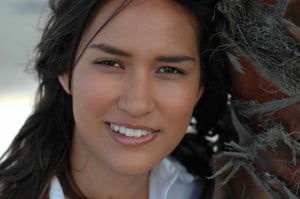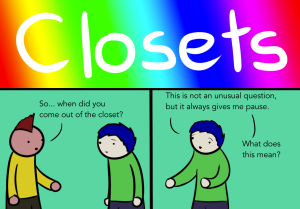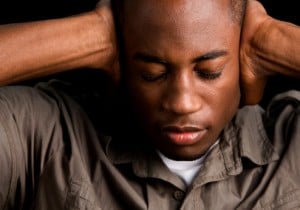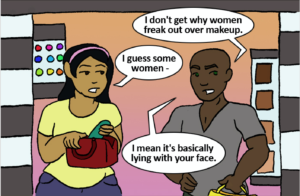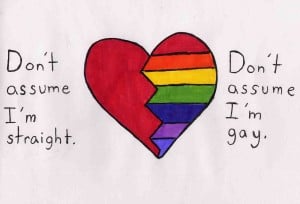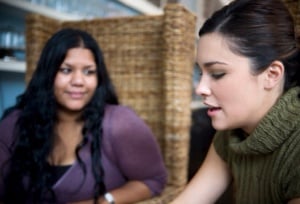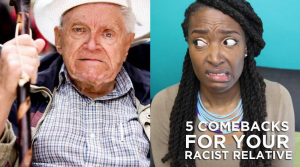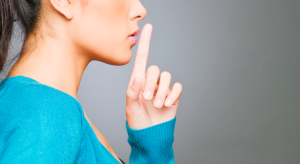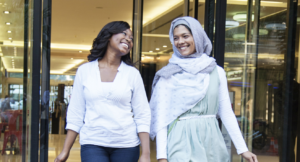So I imagine you clicked on this article looking for some insights into the wonders of the Hawaiian Islands, or perhaps a list of things to do or not do in order to be a socially conscious tourist on your next trip.
We’re going to get to that, I promise.
But first, I want to tell you a story.
In the beginning of everything, there was darkness – a great emptiness where a single being lived. His name was Keawe, and Keawe saw the darkness and loneliness not as something to fear, but rather as an opportunity for creation.
Keawe took his calabash, opened it, and tossed the lid up into the darkness where it became the sky. As the sky unfolded, Keawe hung the sun to light the land he was crafting. Many ages passed, and Keawe had offspring, and those offspring were gods and goddesses for the earth, the sky, the ocean, medicines, war, and many more.
Papahānaumoku was the goddess of the ‘aina (the land), and she married Wākea, a god who belonged to the sky. From this union eventually there came a stillborn child who became Kalo, the taro plant. A younger brother was born then, and his name was Hāloa. From Hāloa descended kānaka maoli (Native Hawaiians), who lived in balance with our brother Kalo and the ‘aina for many generations.
I begin with this story because when we talk about Hawaii, it is almost never in a way that centers the stories and lives of kānaka maoli.
I’m a kānaka maoli woman, and I can tell you right now that when I talk to most people about Hawaii, they’re not thinking about our creation stories, our history, or the struggles we’ve faced due to colonization.
Instead, the conversation usually focuses on pristine beaches, coconut bras, and grass skirts with a few pineapples thrown in for good measure.
But today, at least for the span of this article, I want to flip that script.
We need to talk about the real history of Hawaii – who we were before colonizers showed up, how colonization has tried to undermine our culture and people, and how kanaka maoli are fighting back.
I don’t speak on behalf of all kānaka maoli people, but I can tell you based on my own experiences and knowledge what you need to be aware of.
So, without further ado, here are four things that you should absolutely know about Hawaii before you start to plan your next vacation there.
1. Hawaii Was a Complex, Fully Functioning Society Before Europeans Arrived
Okay, so let me break this down for you: Hawaii existed long before James Cook showed up on our shores.
As kānaka maoli, we are Indigenous Hawaiians. You can see in our creation story that the land is our living, breathing relative.
The islands are our home in the deepest sense of the word, and our ways of life reflected (and continue to reflect) that.
We had ali’i (chiefs or royalty, depending on the translation), ahupua’a (a system of dividing land so that everyone in the community could be self-sustaining and have access), heiau and kahuna (places of worship and spiritual leaders), extensive economic links between the islands, and all the other hallmarks one might expect from what we would today refer to as a nation.
For many years, each island, or mokupuni, was essentially run independently of the other islands.
That changed in 1810 when Kamehameha I united all of the islands under his leadership and established the Kingdom of Hawai’i.
I share this history because too often, there is no acknowledgement of the reality that Hawaiian history does not begin with European colonizers arriving.
When you think about going and visiting the islands, check yourself: Do you have any understanding of what our history really is? Or are you basing your knowledge of the islands off of mainstream media and tourist pitches?
2. The US Was Involved in a Plot to Overthrow the Hawaiian Queen and Take Control of the Islands
So you might be asking yourself, “How did Hawaii go from being a sovereign kingdom to part of the United States?”
The answer is an illegal military coup.
By the mid-1800s, there were many wealthy White plantation owners and businessmen living on the islands who were turning a sizable profit. In addition, the US government had gained control of Pearl Harbor and recognized that Hawaii was a strategic military location for the US.
Both the plantation owners and the US government became very concerned about their future business and military prospects when Queen Lili’uokalani came to power in 1891 and began actively working to lessen the influence of foreigners and to restore control over Hawaiian lands to kānaka maoli.
Their solution to the Queen advocating on behalf of her people? To stage a military coup and take control of the Hawaiian government.
Okay, so bear with me as we walk through the absolutely infuriating events.
The coup began on January 17, 1893, when thirteen European and American businessmen organized around 1,500 non-Native men, armed them with weapons, and camped out outside of ‘Iolani Palace where the Queen lived.
They also told the US Government Minister that since there was a coup going on that American lives and property were at risk – never mind that they were the ones responsible for the coup!
The US Government Minister responded by sending heavily armed Marines (they brought a gatling gun) onto the island and stationing them outside the palace to deter kānaka maoli resistors from staging a counter-attack.
The White plantation owners declared that they were now in charge of the kingdom pending annexation by the US, and the US Government Minister immediately recognized them as the new Hawaiian government.
Queen Lili’uokalani made the decision that, in light of the heavy artillery, the Marines, and the militia organized by the plantation owners, she didn’t want to sacrifice the lives of her people by engaging in battle.
She yielded her authority by stating that she trusted that when the facts of the situation were presented to the US that the US would undo the acts of its representatives and restore her position.
Spoiler alert: That never happened.
In August of 1898, Hawaii was officially annexed by the US and would formally become a state in 1959.
Sound fucked up? That’s because it was (and still is).
Even the US government eventually fessed up to how very illegal the coup was. They even issued a formal apology to the Hawaiian people in 1993!
However, the apology was in word only. There have been no reparations, and certainly no move to reinstate Hawaii as a sovereign kingdom.
If you’re going to Hawaii, especially if you’re a US citizen, you need to know that your vacation is taking place on illegally occupied ground.
3. The US Has Built a Tourist Empire and Military Stronghold on the Backs of Native Hawaiians
The military that helped overthrow Queen Lili’uokalani? Yeah, it never left.
The US has turned Hawaii into one of the most important military holdings the country has, both in terms of strategy and in sheer size.
The US military owns over 230,000 acres of land in Hawaii and controls over 25% of the land mass on Oahu alone.
Hawaii is the state with the highest percentage of military holdings in the country, and that has come at the cost of kānaka maoli.
As the military has expanded, kānaka maoli have been pushed out of their homes and left homeless in order to pave the way for bombing ranges and military bases. Those bombing ranges and bases then cause massive environmental harm that the military is not held accountable for.
And if you remember back to the story at the beginning of this article, the land isn’t an inanimate object to many of us. It’s a living relative – and an assault on the land is also an assault on us and on our rights as Indigenous people.
The tourist industry functions differently than the military, obviously, but the impact it has on kānaka maoli can actually be very similar.
The demand for land that can be developed to accommodate tourists means that housing prices have skyrocketed, leaving many kānaka maoli unable to afford housing.
In October 2015, the governor of Hawaii declared a state of emergency in response to the homelessness crisis the state is facing, and the tourist industry is not blameless.
Tourists outnumber kānaka maoli 30 to 1 on the islands, and it can often feel like policy makers are more concerned with whether the tourists are being kept happy then whether Native people have somewhere to live.
Another issue with how the US has developed its tourism empire on the islands deals with the intentional (mis)use of kānaka maoli culture to sell a fantasy about Hawaii being an island paradise filled with aloha spirit.
See, here’s the thing: Since the beginning of colonization, we were basically banned from our own culture.
Missionaries told us that surfing was ungodly. Our temples were torn down in favor of Christian churches. We weren’t allowed to practice our spiritual beliefs (in the form of hula, chants, songs, and stories). And we were forced to assimilate and only speak English.
The Hawaiian language was banned outright from schools and government, and traditional clothing and attire was also done away with. We weren’t allowed to access those pieces of our culture without being shamed and condemned for it. Yet as soon as it became profitable, stores were suddenly overflowing with kitschy hula dancer icons and plastic flower leis.
We could talk for days about cultural appropriation (see awesome discussions here and here), but the main thing to know is this: The tourist industry has appropriated and exploited our culture, our land, and our people and commodified them in order to profit.
I’m not trying to guilt you out of ever going to Hawaii as a tourist; what I’m saying is do some research.
Figure out which tourist places are run by missionaries in order to sell specific narratives about the islands (cough, Polynesian Cultural Center, cough) and then instead of going there, find some of the countless kānaka maoli businesses and support them instead!
4. Kānaka Maoli Have Been Fighting for Our Rights for a Long Time – And We’ll Continue to Do So
Kānaka maoli activism has always been there, whether the mainstream has recognized it or not.
We’ve worked to restore Hawaiian language, or ‘ōlelo, by creating schools for our young people that teach in Hawaiian and are grounded in our culture.
Even the language that we use to describe ourselves is political. There has been a move to identify as kānaka maoli in recent decades as an intentional way to distance ourselves from colonial labels like “Native Hawaiian.”
We’ve fought back against the military expansion and destruction of the ‘aina. We’ve demanded accountability when real estate developers dig up our sacred burial grounds to build a WalMart. And we’ve dealt with the backlash when non-Natives got angry at us for disrupting their idyllic views on Hawaii as a post-racial paradise.
We are not the passive, perpetually happy, less-than-intelligent natives the mainstream media might have you believe.
And if our anger makes you uncomfortable, I’m going to need you to check yourself.
We’ve been living the violence of colonization every day since Captain Cook first arrived, and we know what’s up.
Advocating and agitating for our rights, to protect our people and the ‘aina, does not mean we are backwards, uninformed Natives who are opposed to progress. It just means we’re opposed to the kind of white military neo-colonial progress that the US seems determined to force on us.
And that’s a good thing.
***
Okay, so you’ve gotten a super abbreviated version of what you need to know about Hawaii before going there on vacation.
There’s so much more complexity and depth than what could ever be covered in a single article, but this is a beginning. The question now is: What are you going to do from here?
Think about how often Hawaii comes up in your daily life. Friends, family, coworkers, and community members might all want to talk about their next big vacation, or how jealous they are of people who live in Hawaii.
Those are all opportunities for you to pass along some of the stories that I’ve shared here today (or just send them this article if that’s more your style).
If you’re not kānaka, you need to do your part to break down the fantasy that’s been created, and educate the people in your life about the real history and present-day situation in Hawaii.
As for your next big vacation to Hawaii, I want you to do something for me. I want you to go to ‘Iolani Palace, where Queen Lili’uokalani was forced to choose between sacrificing the lives of her people and maintaining the sovereignty of the kingdom.
I want you to stand there, and I want you to think hard about how you are complicit in the ongoing violence and erasure facing kānaka maoli people as a direct result of US colonization.
And then I want you to bring that experience back with you, to wherever you’re from, and share it.
There has been silence for far too long about anything Hawaiian that doesn’t feed into a paradisiacal fantasy, and raising our voices – collectively – is the first step towards accountability.
[do_widget id=’text-101′]
Mahealani Joy is a Contributing Writer for Everyday Feminism and kanaka maoli queer woman currently living in the Midwest. They are involved in organizing to end sexual violence against Native women and finding ways to strengthen Indigenous communities.
Search our 3000+ articles!
Read our articles about:
Our online racial justice training
Used by hundreds of universities, non-profits, and businesses.
Click to learn more


